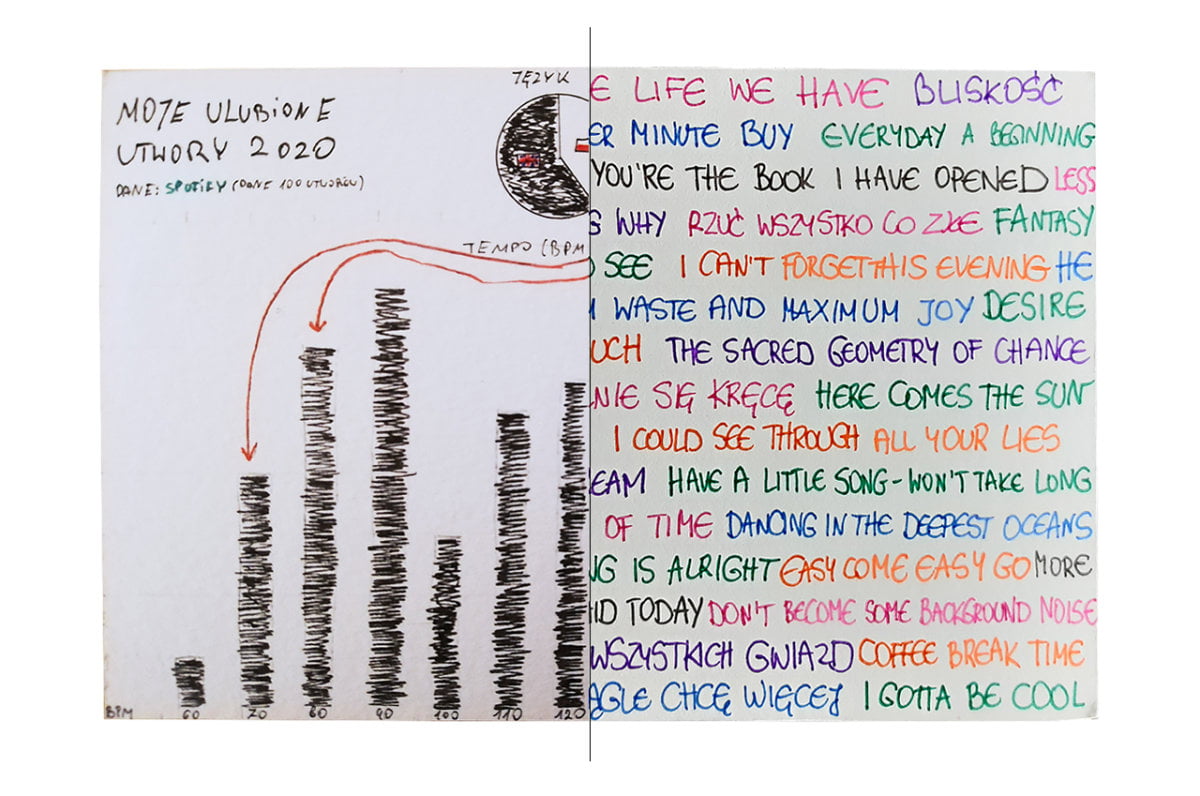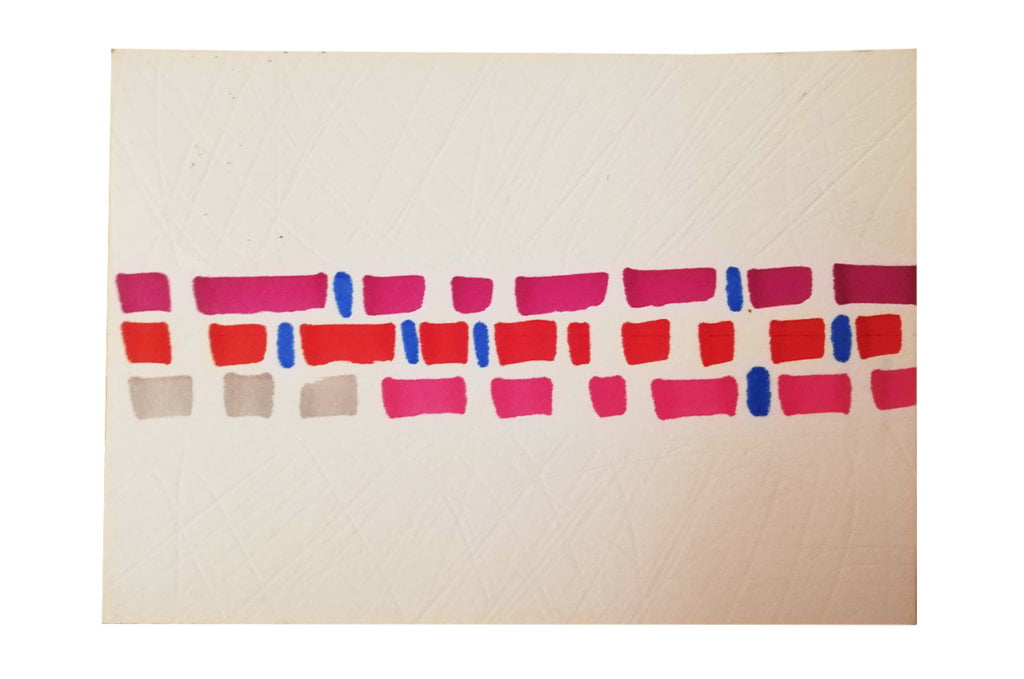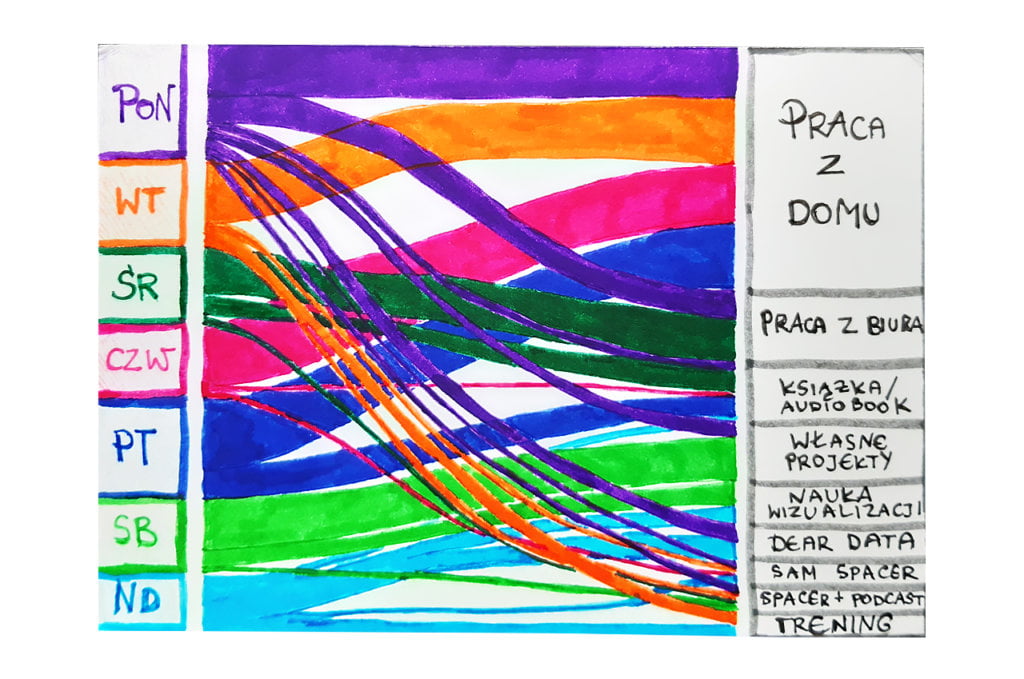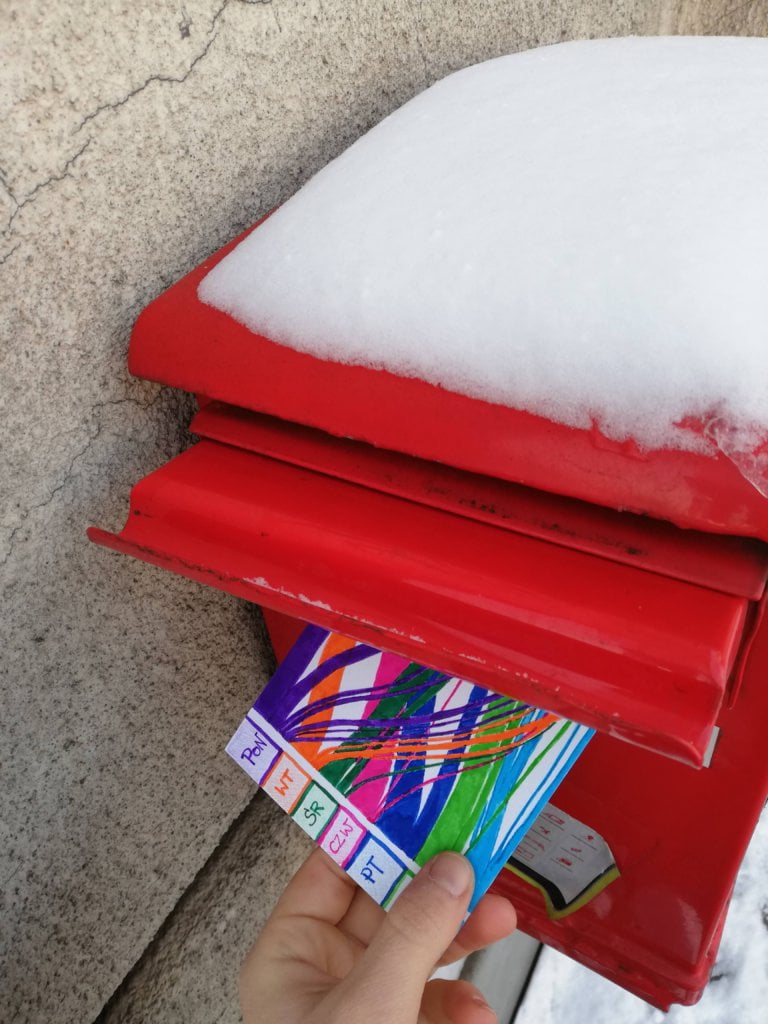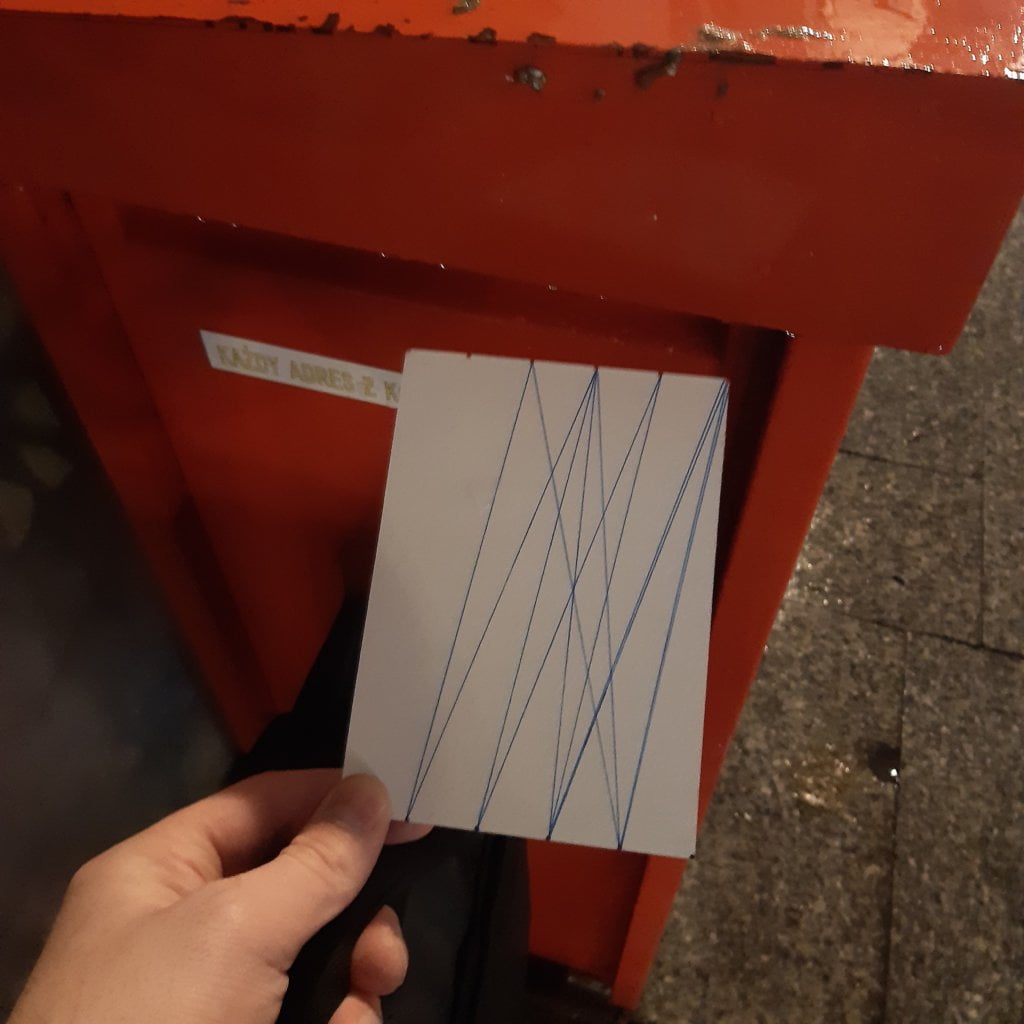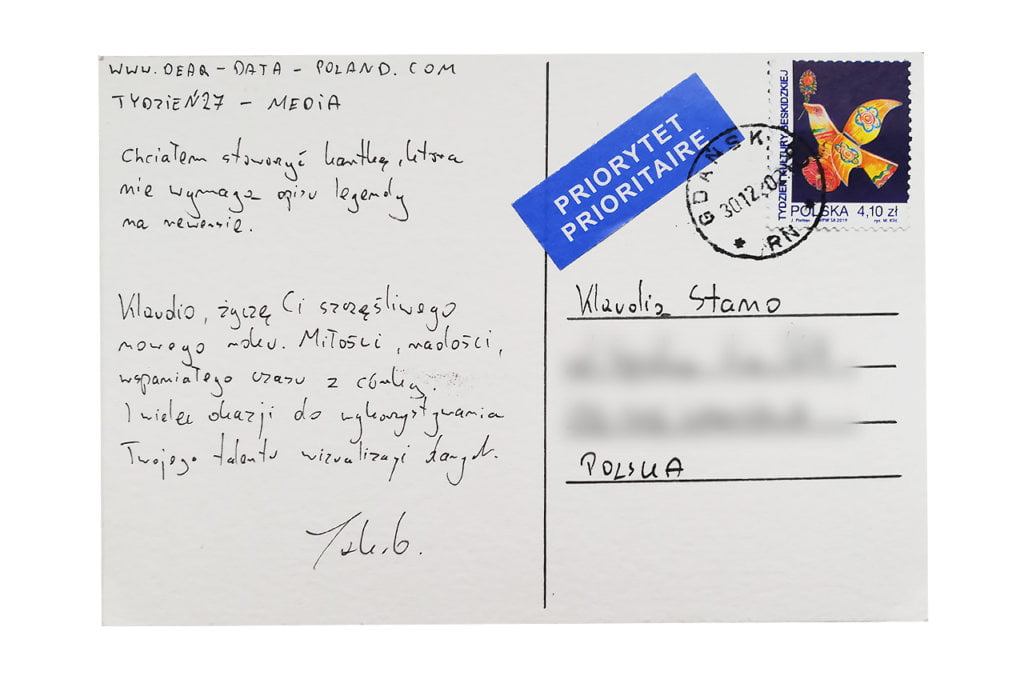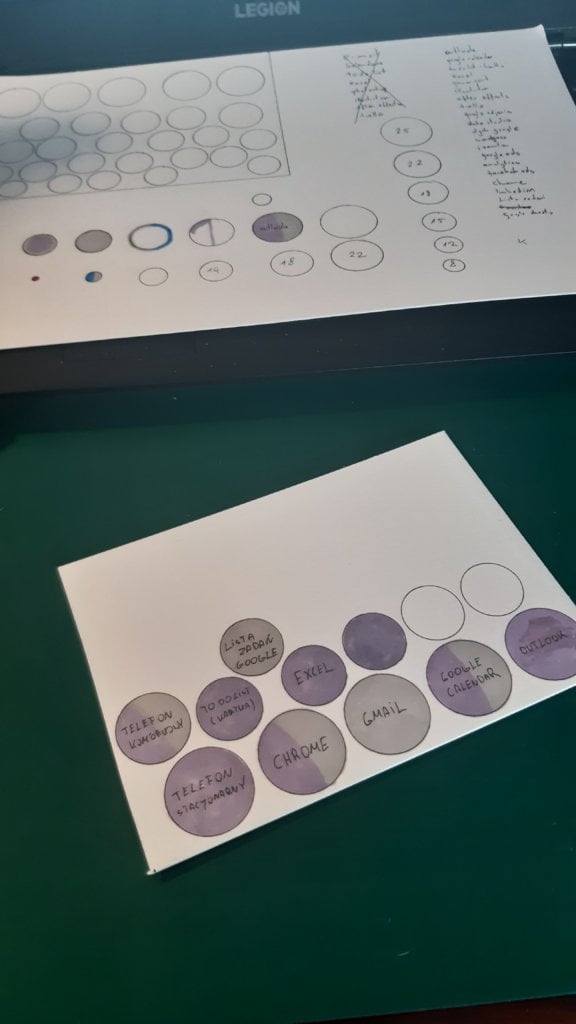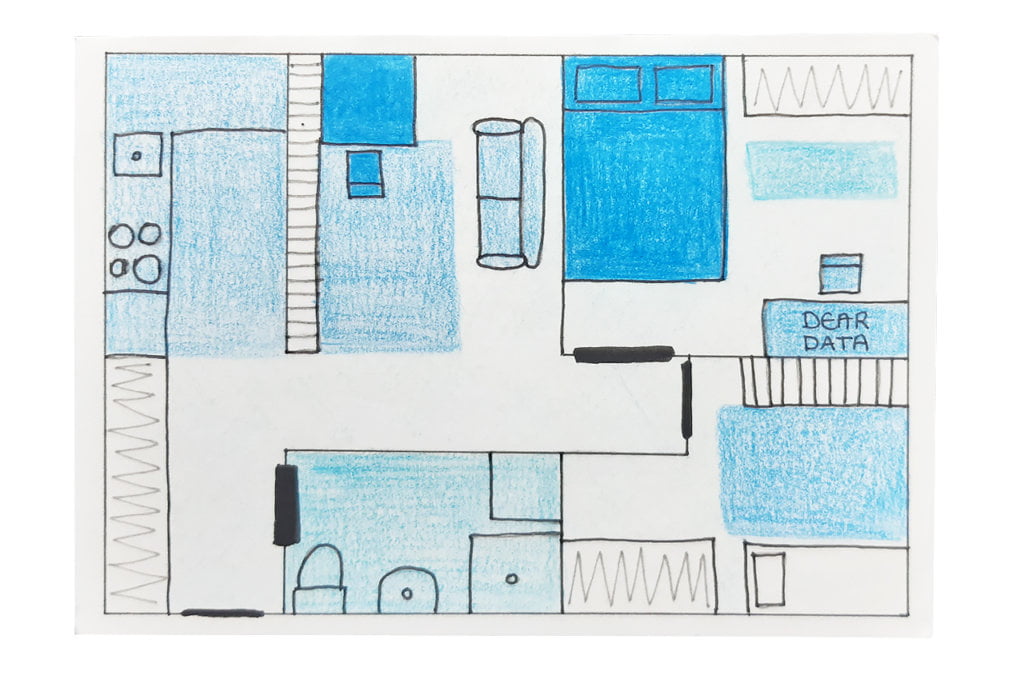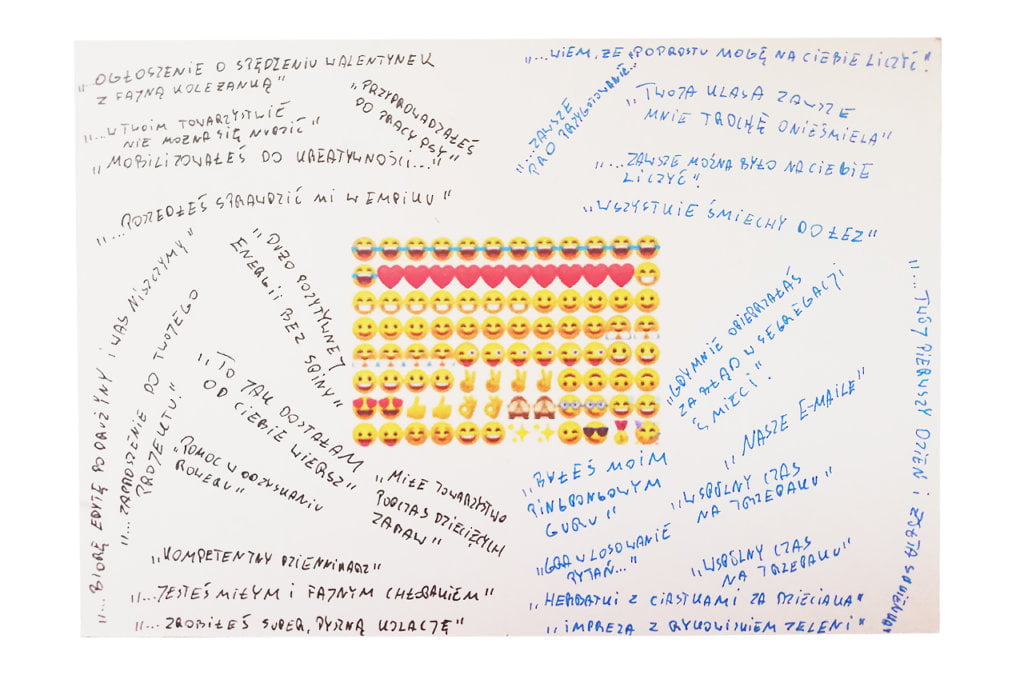

Jakub
Topic:
I associate sounds with music. And this is what I explored this week. Well… week 41 can be a difficult one for me (Topic: music)!
Data gathering:
I like to use data that is collected involuntarily. Even though I am pedantic about collecting data, I know that systems do it better. My database for this week was Spotify’s list of my favorite songs of 2020. I exported it to Excel and started… playing with the data. I have analyzed my 100 favorite songs in many different ways, e.g.: the artist’s gender, the song’s language and beats per minute (BPM).
I thought I listened to more women than men.
Data drawing:
After my recent unsuccessful attempts to get inspiration from artists (week 31), I am going back to the basics: minimum of colors and chart simplicity. I only experimented with the styling that was supposed to resemble sound waves.
Klaudia’s postcard:
I liked Klaudia’s postcard as soon as I saw it in the mailbox. I appreciate that Klaudia approached the topic in a non-obvious way. The postcard gives an interesting insight into Klaudia’s personality.
The process:




Klaudia
Topic:
Initially I thought about the sounds of the city, such as the rustle of trees, the siren of a passing ambulance or the singing of birds. However, I had a hard week at work ahead of me, so I chose the simplest solution: music. At the beginning of the week I made sure that it was possible to download data from the Spotify application and… I forgot about collecting data until Sunday. Imagine my horror when it turned out on Sunday evening that Spotify could send me the data, but… within 30 days. I had to improvise, Jakub is waiting for a postcard!
Data gathering:
There was no way out. I had to approach this week in a qualitative (not quantitative) way. I came up with an idea. I estimated that every week I listen to all my favorite songs at least once. I decided to take a look at this long list and analyze the lyrics of non-instrumental pieces. I was very excited about the idea, because I usually don’t pay attention to the lyrics so it was a good opportunity to get to know the bottom of the songs I listen to. I created an empty Google Doc and started pasting there one positive or emotional sentence / word from each song on my favorites’ list.
Data drawing:
The lyrics of my favorite songs turned out to be so diverse and interesting that I had no choice but to put (almost) all of them on my postcard. Putting one sentence after another in different colors seemed to me a visually simple and attractive solution
Jakub’s postcard:
A very, very interesting approach to analyzing one’s favorite music. I would never think of it in my life, and that’s why I love this project – I’m learning something on a weekly basis 🙂
The process:


